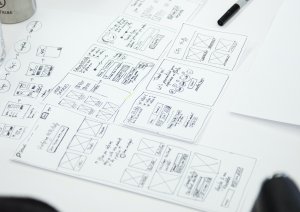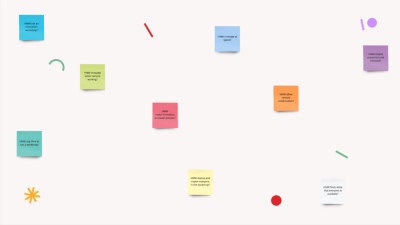
How to deliver product innovation against the odds

- Innovation
In this post, we look at innovation, what it means, why it can be so hard to achieve, and some practical tips to help deliver within large organisations.
Innovation is a term used very widely in global enterprise. In some instances it has taken to mean the sharing of ideas - contributing to an organisation’s working practices, culture or programmes of work. In others it has justified some serious investment in organisational change programmes, impacting individuals’ roles and the shape of organisations.
In reality it’s all this and more, and it’s often very difficult to deliver. In this post we’ll look at the different types, we consider at why it’s challenging, and outline some tactics on how it may be possible to start to deliver innovation and change.
Introducing Innovation
Companies have a mandate to increase returns to shareholders, and in order to do so they invest in innovation. Clayton Christensen, the renowned business professor, categorises three types of innovation that are central to the growth of an organisation:
Sustaining innovation
This is the most common type in organisations, characterised by incremental improvements upon an established product or service. It is important, providing predictable returns after a known amount of investment.
A good example from the automotive industry is a car such as the latest Volkswagen Golf. Every 4 years VW release a new Golf that looks slightly different and includes some new attributes. Each model release can provide a justification for existing owners to upgrade, and some new customers might be attracted from another brand’s model.
It is unlikely however that a particular model will demonstrate huge business growth that is transformational for the organisation.
Efficiency innovation
This is where existing products and processes are refined - helping to make more, with less.
An example of efficiency innovations would be an investment in automation in a factory, replacing repetitive and precise behaviours with robots, therefore increasing capacity and lowering the cost of production.
Efficiency innovation is important for organisations, especially in saturated markets and in the mature stage of the product lifecycle, at which point the cost of production is known quite precisely, and any reduction has the effect of increasing the profit margin.
Disruptive innovation
This provides a transformative impact on the market. For the incumbents it threatens to undermine their product and existence in the marketplace, for the innovator, it could lead to an incredible growth opportunity and propel their organisation forward, however there is a great risk that it may not pay off at all.
A key characteristic of disruptive innovation centers around making new or existing products accessible to a wider audience, at a lower price point. A good example of this is is when mainframe computing became desktop computing, and later mobile - at each step the products offered value to a wider audience, resulting in transformational growth for those organisations supplying the newer product. The outcome is net growth for the organisation.
This is the kind of innovation that can undermine existing successful products’ market position and role, and can topple incumbent businesses. Take Blockbuster, for example. Once a familiar feature on every US high street, Blockbuster video rental was undermined and ultimately toppled by Netflix and its competitors, which was able to access a wider audience through a new channel.
In summary - innovation of all types is essential to organisational growth and survival. Without change, the organisation’s market position is liable to be undermined by a competitor. However, it can be very difficult to achieve within an established organisation.
Innovation of all types is essential to organisational growth and survival. Without change, the organisation’s market position is liable to be undermined by a competitor.
Common Challenges
Organisations struggle to deliver innovative change and products for a variety of reasons; here we consider some common challenges:
Clarity for the customer
Good ideas expressed poorly are bad ideas. A good product idea has a clear value proposition for the customer, and a clear benefit to the business. What’s more, these benefits should be validated with customers and stakeholders. Too often individuals in organisations are either unclear or so convinced of the idea that they miss cues from customers and stakeholders that the idea isn’t there yet.
Courage in the culture
A culture that encourages idea generation, and one which also tolerates failure is rare. Most organisations are configured to produce predictable and standardised results, where failure is not an option. People dislike change, and organisations dislike it even more. True innovation often requires big changes which needs courage across the business.
Confidence in calculations
After ideas are off the ground, they may take a while to shape and flourish, requiring patience and conviction from individuals and product sponsors. Unless an organisation understands what metrics to track and how they would measure success, these necessary tweaks are more like stumbling in the dark.
These reasons and more are exacerbated when organisations pursue disruptive innovation, challenged with the ‘innovator's dilemma’ - a problem whereby incumbents struggle to create disruptive innovation as result of their scale - the business demands highly profitable products alongside their primary (cash cow) products and is not setup to embrace disruptive innovation; which is usually more speculative, targeting new audiences. These products are often seen as threats; with the potential to jeopardise the organisation’s structure and methods - and make it very difficult to deliver.
What you can do
Here are several recommendations that Graphite employs to help deliver innovative products successfully, and combat the common challenges.
Create space
‘Business as usual’ is one of the greatest threats to innovation; with individuals preoccupied with the detail of daily challenges and tasks, they are unable to think differently. Instead, create space and meet together in workshops with individuals with different skillsets, focusing on thinking more broadly, considering the whole customer journey, the value proposition for customers, as well as trends in the industry.
Focus on the value
It’s important to articulate an idea clearly in order to achieve long-term buy-in, and a clearly defined product strategy is the best way to achieve this; clarifying important aspects including customer and business value, customer audiences, success criteria and budgets.
Be creative together
Everyone in a business brings their own expertise and responsibility, and so it’s important to work in partnership with other departments to deliver successful products and outcomes. We find design sprints as part of design thinking processes to be really useful frameworks to engage individuals in conversations, collectively considering desirability, viability and feasibility, and each suggesting ideas, which are refined, prototyped and tested with customers - gathering important insights and feedback in just a week.
Test and learn
Creation of a Minimum Viable Product is the next step in bringing your idea to life. It is possible to create an experience which delivers maximum value to a customer and the business in the time available - expressing the vision in a visually rich product, and designed to inspire engagement, confidence and support from senior stakeholders and qualitative and quantitative feedback from your target audience, for the next phase of the product development.
References
Video: Clayton Christensen (The Innovator's Dilemma) on How to Build a Disruptive Business
Interested in Innovation?
We can help you bring your biggest ideas to life. Through our Innovation Workshop, we can work with you to ideate and prototype an innovative solution to some of your company's or customer's biggest challenges. Get in touch to learn more.
Want more on innovation?

